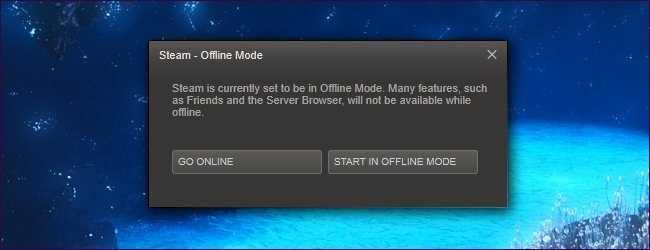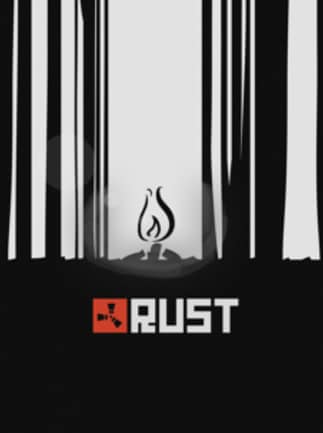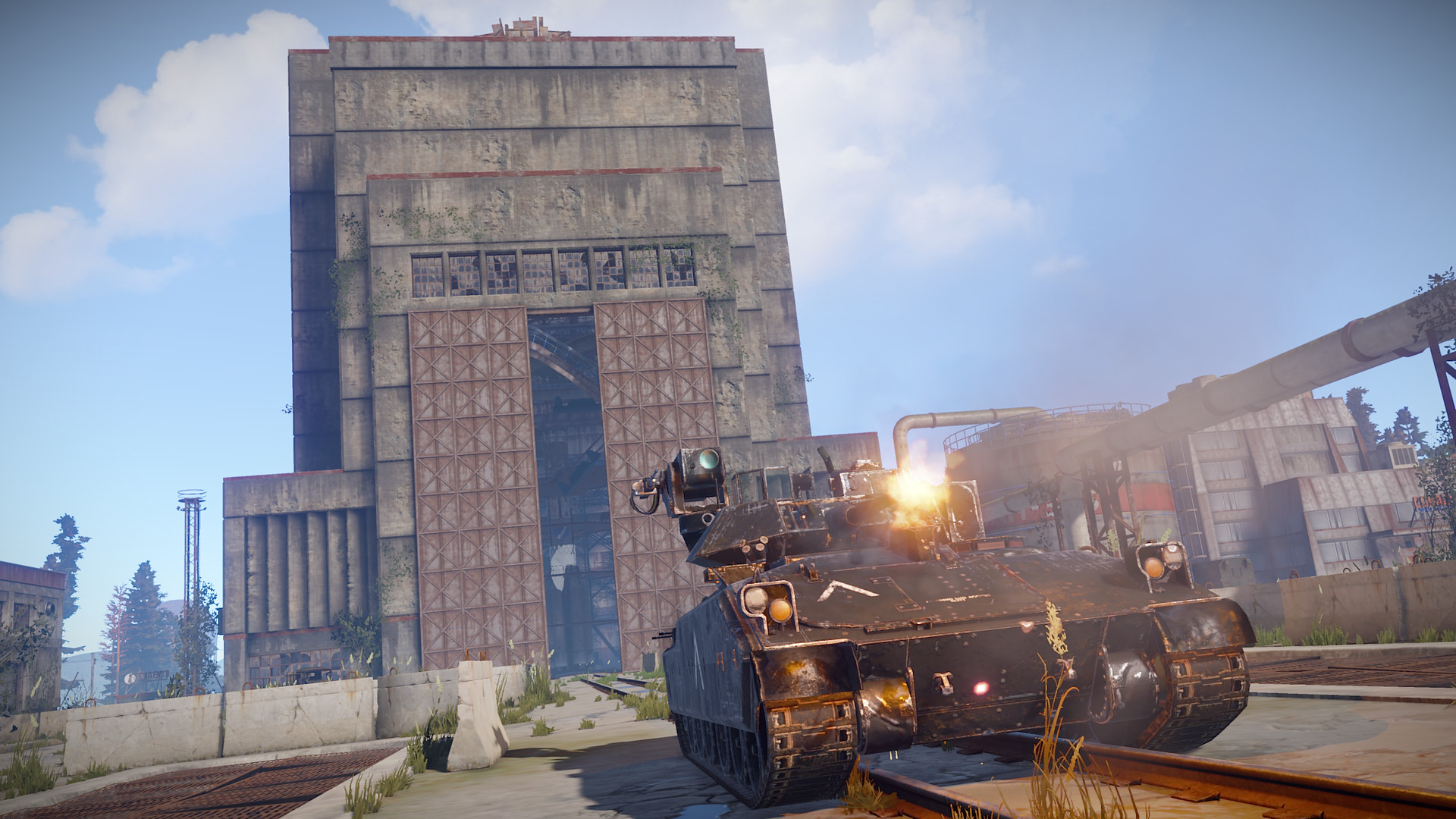고정 헤더 영역
상세 컨텐츠
본문

Rust is a multiplayer-only survival video game in development by Facepunch Studios for Microsoft Windows, OS X, and Linux. Rust was originally released onto Steam’s Early Access program on 11 December 2013.
Rust Facepunch Studios, Release 11 December 2013, Mode(s) Rust is a only developed and published by in February 2018 for,. Rust was initially created as a of, a popular for, with elements akin to those in. The objective of Rust is to survive in the wilderness using gathered or stolen materials.
Players must successfully manage their hunger, thirst, and health, or risk dying. Despite the looming threat of and, the primary menace is other players due to the game being solely multiplayer. Combat is accomplished through and primitive weapons, such as. In addition, vehicles controlled by will occasionally roam, attacking heavily-armed players. These can be defeated with persistence.
Rust features crafting, though initially limited until the discovery of specific items in the game's. To stay protected, players must build or join to improve their chance of survival. Is a major aspect of Rust and is done more frequently by large clans. Rust was first released in December 2013 to Steam's Early Access program, while in an. Further into its development, the gameplay was changed significantly.
Dangerous wildlife replaced zombies as the primary environmental threat and several fundamental revisions to the crafting system were released. 2014 saw the game ported to the game engine, providing substantial graphical changes. Around this time, Rust introduced predetermined skin colour.
Despite being fully released, the game continues to receive updates. Throughout Rust 's alpha release, critical reviews were mixed, with many comparisons made to other survival games. Rust was commonly explained as being a mixture of.
During this period, reviewers frequently noted the game's unfinished nature. During its pre-release phase, critics praised the concept and gameplay and by March 2017, Rust had sold over five million copies. After leaving Early Access, it received mixed reviews from critics. The combat and the survival aspects were highlighted by those who enjoyed the game, though reviewers were critical of the constant need to grind for materials, along with the harsh beginner experience. A player using the starting rock to gather wood As a -only video game, Rust pits players against each other in a harsh, environment with the sole goal of survival.

Animals, such as wolves and bears, act as a looming threat, but the primary danger comes from other players. Most maps are, with the exception of Hapis Island, a pre-built map. (PvP) combat is accomplished with, melee weapons and craftable guns. Bullets and other projectiles travel in a trajectory, rather than being. There are a number of different types of bullet for each gun, including high and explosive, thus allowing for more diverse strategy.
Hit tracking calculates damage; shots to the head are more damaging than shots to other parts of the body. The use of weapon attachments, such as, provides an advantage over opponents. To survive, the player must craft tools, build bases, and team with other players. When starting a new character, a player only has a rock and a torch. The rock can cut down trees and break apart stones. Cloth and food can be gathered by killing animals; mining provides stone, metal ore, and sulfur ore; and chopping down trees provides wood. To survive in the world, the player must gather resources and use them to craft tools, weapons, and other gear.
To items, all materials must be found, with enhanced items needing more, along with consumables, called components, which are scattered around the map. There are limitations imposed on the amount of craftable items, with blueprints allowing the creation of more advanced items.
An important element in Rust is the. These are parachute-equipped pallets of supplies delivered by a. They can be seen over extremely long distances, sometimes resulting in players running towards the airdrop. There are also other entities that drop advanced loot, including an and the. These travel to a random zone on the map, try to kill players, and then drop a supply crate that opens after a length of time, inviting PvP interactions. There are player-operable vehicles in Rust. Boats are used to traverse long distances across water and reach valuable loot.
Can also be used to explore the map quickly. Spawning randomly, they can be used once fueled. Unlike the helicopters, balloons can be destroyed by which players can place in their base. The player must stay well fed, or they will die of. There are other challenges the player may face during gameplay, such as drowning, hypothermia and wildlife attacks—primarily bears and wolves. Specific locales around the map are radioactive.
Rust Steam Mac
There are four levels of radiation: minor, low, medium, and high. The correct armour or clothing must be worn to enter these areas; failure to do so can result in death. Upon death, a screen with an option to respawn at a random location or at a sleeping bag placed prior appears.
Respawning resets the player's inventory to the basic rock and torch. The main concept of Rust is to form a '.
Clans usually create housing for their members, give items and supplies to each other and partake in organised. Safe zones, called Compounds, provide players with a place to trade resources, overlooked by automated high-damage that fire on anyone who draws a weapon, discouraging betrayal. Additionally, these treacherous players will be marked as hostile for a predetermined amount of time. Development. A comparison of two different updates of Rust, the top (2014) one is the earlier of the two. The bottom (2016) used an updated game engine Rust 's development began as a clone of DayZ, a popular mod for ARMA 2, featuring elements derived from.
Garry Newman, the CEO of Facepunch Studios, said ' Rust started off as a DayZ clone. But then we decided that we are sick of fighting zombies.
And can't compete with the island in terms of landmarks and towns.' Consequently, Newman described the game as being more along the lines of entries in the series. Facepunch released the game onto the Steam program on 11 December 2013. Following its alpha launch, Facepunch actively released updates for Rust adding mechanics like animals, armour and weapons. In February 2014, the developers removed zombies, a temporary enemy, from Rust, replacing them with black bears and wolves. Early on developers made the choice not to try to populate the world with interesting locations to explore, but rather provide the ability to create them. Newman described it as 'we give them the tools, they make the world'.
One of the developers' aims was to create a world which does not encourage any particular kind of behaviour from players. They considered implementing a system like DayZ ' where those who kill other players get unique outfits which identify them as 'bandits', or possibly a rating or color-coded system. However, the developers ultimately rejected these ideas, believing they would detract from player freedom. Instead, they found to their surprise that the implementation of voice chat had a noticeable effect on player behavior. With the ability to communicate, many players would no longer kill each other on sight out of fear. In late 2014, developers released an experimental mode for Rust and the game was on to, enhancing the graphics and in turn, improving the mechanics and texture realism, as well as allowed for larger worlds. The experimental mode featured a new system called CheatPunch, which banned thousands of players within a few days.
In October 2014, the experimental mode became the default launch option. Shortly after, in December, a third-party anti-cheat system, replaced CheatPunch. In early 2015, Rust added a feature that decided each player's tied to their ID. In the original game, the featured statistics like as, hunger and level. These were later modified and hidden statistics such as were added.

Monuments went through a phase where developers removed the radiation hazards because of the annoyance it was causing. Female models, added to the game shortly afterward, were initially only available for to test. Upon rollout, akin to skin colour, players were automatically assigned a permanently linked to their Steam account. Later in 2015, stores selling guns, clothing and other objects were added to the game. When introduced its Item Store, Rust was the first game on Steam to use the feature.
The was also allowed to sell similar items. Developers removed, one of the main concepts in Rust, in July 2016. They replaced them with an system where players could level up after completing tasks, such as gathering wood. In September, lead developer Maurino Berry mentioned in a post that there was a chance the experience system would no longer exist in the future. Before saying this, Berry wrote in one of the devblogs 'the XP system had huge praise until it was released, and then lots of people hated it'. In early November 2016, components replaced the experience system. Originally, players had an initial list of items they could craft.
This was changed to having a complete list with the required components from the outset. Radiation, which was removed in 2015, was reintroduced in November 2016 after being 'reprogrammed from the ground up'. Instead of each location having the same level of radiation, developers added different levels ranging from low, to medium, and high. In early 2017, Garry Newman said that had Steam Early Access not existed, Rust would have been fully released as a game by then. The development team would have continued to release updates. In June 2017, developers altered the game's gun mechanics to be more like 'traditional first-person shooters'.
This was achieved by reducing recoil, material costs, and improving overall accuracy. This update also saw the beginnings of an overhaul of Hapis Island, the game's only non- map. The game left Early Access and was officially released on 8 February 2018, along with graphical and gun changes.
By this time, blueprints had been reinstated. Newman mentioned that despite the official release, regular updates would continue. He noted the update cycle would change from weekly to monthly so as not to 'rush in features and fixes that end up breaking something else'. Post release, Facepunch have continued to support the game with updates that added new features, including graphical overhauls and new guns. April 2018 was the first big update post-Early Access. This update added the first player-operable vehicle, a boat, and a new hostile entity, a CH-47 Chinook.
One month later Rust saw the addition of Compounds, safe areas guarded by scientists, Facepunch had hinted at before and high-damage turrets. The update also added equipment to allow for the ocean to be explored easier. The ocean-related gameplay was addressed again in October, when Rust saw the addition of a that allowed for visitation, the 'CCSC Lazarus'. Similar in nature to the addition of player-operable boats, early November saw the addition of the first flying vehicle: hot air balloons. Additional weapons were also added at the same time.
Reception In Early Access Rust received mixed reviews following its alpha release, with many denoting the unfinished nature and lack of polish. 's Andy Chalk said Rust was a great use of Early Access and even though 'it's far from finished', it's ready to be played. 's Shaun McInnis said the early 2014 version was 'rough around the edges' and 'littered with bugs', but it entertained and had potential. Matthew Cox of said it was smart of the developers to switch to the in late 2014 due to the game's instability. In Cox's review, he noted many glitches in the late 2014 version, including unresponsive animals, issues and unstable servers. IGN 's Mitch Dyer did not enjoy the combat, calling Rust a 'semi-broken' game he felt unable to recommend. Other games like, and were compared to Rust because of their open world survival aspects, as well as having crafting mechanics similar to Rust.
Kotaku 's Luke Plunkett noted the similarities, saying it felt as though someone had said thought of a game whereby Dayz and Minecraft could be played simultaneously. Dyer, while criticising Rust due to its bugs, called parts of the experience 'utterly unforgettable' and often unpredictable. The inability to choose and design their character was both commended and criticised. The channel commended Rust for promoting diversity by randomly selecting a player's in-game race. Tying race to their Steam ID forced players to experience the game in a different way than they might normally experience it, perhaps promoting for someone of a different ethnicity. David Craddock of criticised the lack of communication between Facepunch and the community when they added female models.
In response to this criticism, Garry Newman commented he felt some trepidation about adding the racial feature, fearing it might be seen as the original character model '. He stressed the chosen ethnicity was permanent—'just like in real life, you are who you are'.
Newman discussed the reasoning behind not providing the option to choose their character's gender and race in an article in, saying Rust is about survival, not characterization and identity. 'We wanted the appearance of the players to be consistent over time. They should be recognisable consistently and long-term.' Sales reportedly increased by 74% shortly after the addition of female models.
Sales Within the first two weeks of Rust 's alpha release it sold over 150,000 copies, compared to the 34,000 copies of sold in its first week. Rust 's sales had reached one million copies after being an Early Access title for only two months, and during February 2014, it overtook in terms of sales, making over 30 million. By the end of 2015, three million copies had been sold.
By March 2017, the game had sold more than 5.2 million units, with more than 1.2 million in-game skins sold. Full release Reception Aggregate score Aggregator Score 69/100 Review scores Publication Score 8/10 6.5/10 3/10 7/10 80/100 69/100 After being fully released, Rust garnered 'mixed or average' reviews on website. Critics praised the PvP combat, difficulty, and survival aspects, while grinding and the experience had by new players came under some criticism. Many critics held the opinion that while starting anew was frustrating, the combat was rewarding. For instance, Luke Winkie of summarised the game saying, 'Wake up naked, run for your life, do horrible things to one another. There is no grander narrative, or, or win condition.'
He described the beginner experience as 'quite prickly' but continued on to praise the combat, joking that 'connecting a hatchet with an idiot's head feels great'. Gloria Manderfeld, a writer for the German magazine, echoed these opinions, adding there was little end-game besides PvP. However, she opined the PvP itself was effective. Ray Porreca of described the combat as the 'meat' of the game. However, he wrote that the experience would vary depending on their desire to fight. 'If you can look past a community that tends to be, Rust 's sprawling plains and toppled landmarks are an excellent backdrop for player-driven storytelling and pitched, dramatic moments.'

In a negative review 's Alessandro Barbosa said the whole experience felt unfulfilling. He described the game as lacking certain creative features, like the ability to easily redesign bases. The disdain towards the experience as a new player was noted in conjunction with the necessity of grinding, and how repetitive that became. 's review described the game as expecting the player to spend all their gaming time on it, fearing that failing to do so will result in being raided and needing to begin again.
's Javy Gwaltney reiterated this, explaining it felt demotivating when they died solely because they came in contact with someone more experienced. Agreeing with Manderfeld's description, in an updated review Cox said his patience wore thin after a while. He said that while maintaining may have once been enjoyable, he balked at the prospect in 2018. Nonetheless, some critics praised the game's difficulty mentioning the satisfaction they felt after managing to survive successfully. Porreca recommended the game to those willing to dedicate time, saying the game offers 'a social sandbox and a deep, functioning crafting system'.
Winkie expressed interest in the necessity of managing hunger, thirst, and health while learning more and discovering better items. He also expressed a sense of appreciation for those dedicated to the game, mentioning the YouTube videos of large, multi-clan raids. He closed the review saying everyone should try Rust due to its difference from other games.
Rust Steam For Sale
Cox agreed noting the game's brutality only added to the gratification a player felt when they managed to eventually succeed. The reception towards the graphics were mixed. Critics praised the environment, but expressed execration towards the animations and character models. Barbosa described the animations as 'stiff and unnatural' and the models 'ugly and dull'. Additionally, the way Rust uses sound was commended by Gwaltney, who explained it as being compelling due to the way players must listen for others in order to survive. References.





